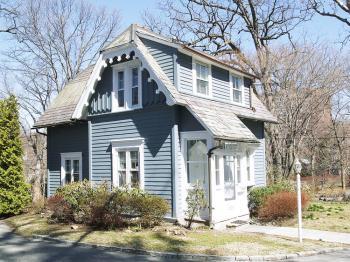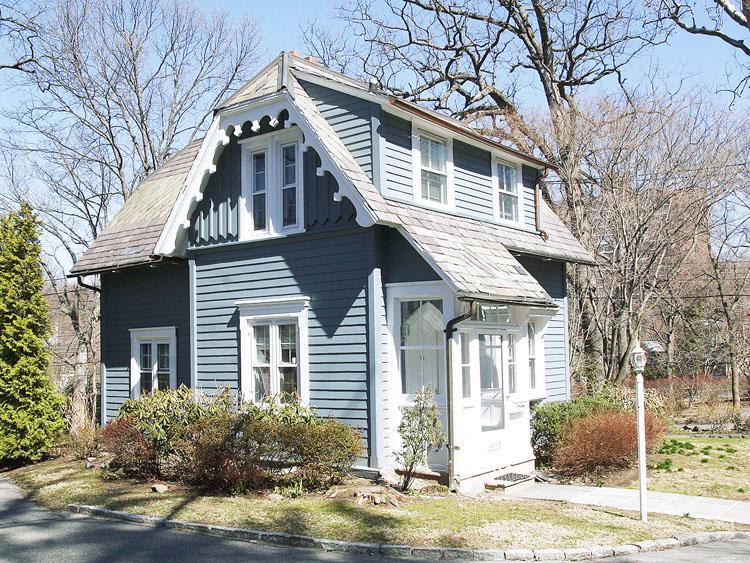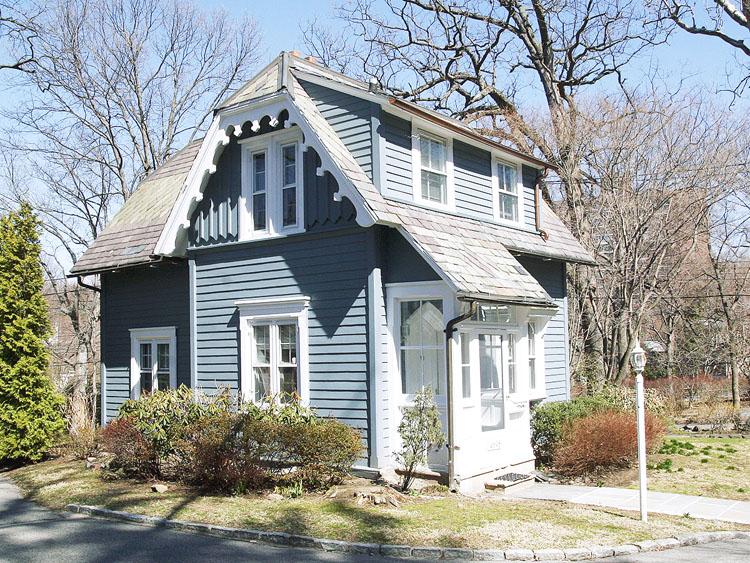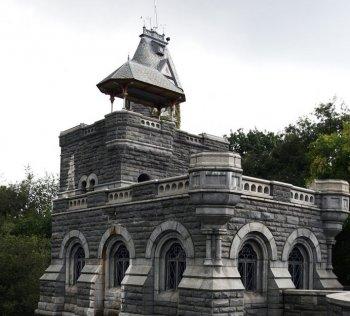The Greyston Gatehouse
4695 Independence Ave.,
Riverdale, the Bronx
Architects: James Renwick Jr.
& Joseph Sands
Year built: 1863-1868
NEW YORK— The Greyston Gatehouse, tucked away in the labyrinth of private lanes, dead end streets, and goat paths that line the hillside east of the Henry Hudson River is one of four properties the city’s Landmarks Preservation Committee added to its list last week.
The one-and-a-half story frame building was built as a gatehouse for the estate of William E. and Sarah T. Hoadley Dodge Jr. With its proximity to the city and scenic views of the New Jersey Palisades, as well as access to the Hudson River Rail Line completed in 1849 that ran from New York City to Poughkeepsie, the area was a favorite for wealthy New Yorkers.
The grey granite Gothic Revival villa known as Greyston, also designated a city landmark in 1970, was built for Dodge and his wife in 1863 and designed by architects James Renwick Jr., and his partner, Joseph Sands. The villa was built as a summer and weekend escape and one of five estates in the earliest known suburban railroad development within New York City, documented in a map of 1868 with the area labeled Riverdale. The estate is just south of what is now the Wave Hill public garden, and north of Spuyten Duyvil.
Renwick and Sands are also credited with designing the gatehouse for the villa, which would have housed a caretaker’s family. The rural cottage has its design roots in a rural cottage style popular in 19th century and has a diamond patterned slate roof, and a “jerkinhead” gabled roof, in which a sloped roof is truncated by a gable. The gatehouse has changed hands many times and was previously owned by John Jay Osborn Jr., author of the popular book “The Paper Chase,” that was later made into a movie. In 1981 the property was sold to Dr. Jo Ivey Boufford, a pediatrician and currently president of the New York Academy of Medicine, and in 1999 the property returned to the Dodge family as part of the Cleveland H. Dodge Foundation, then administered by Cleveland E. Dodge Jr., William Dodge’s great grandson.
Source: NYC Landmarks Preservation Commission




